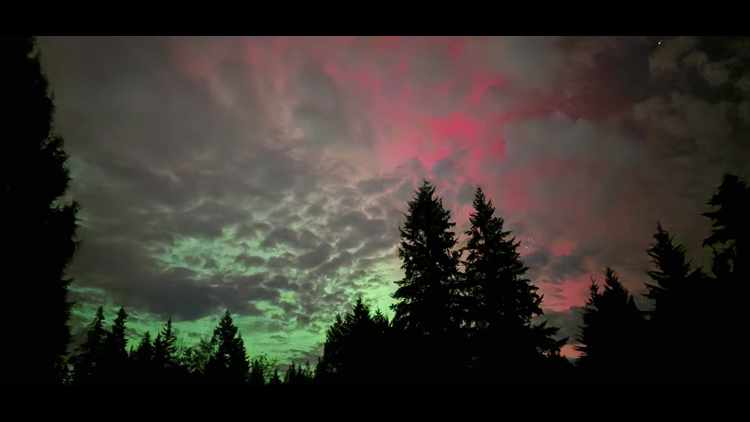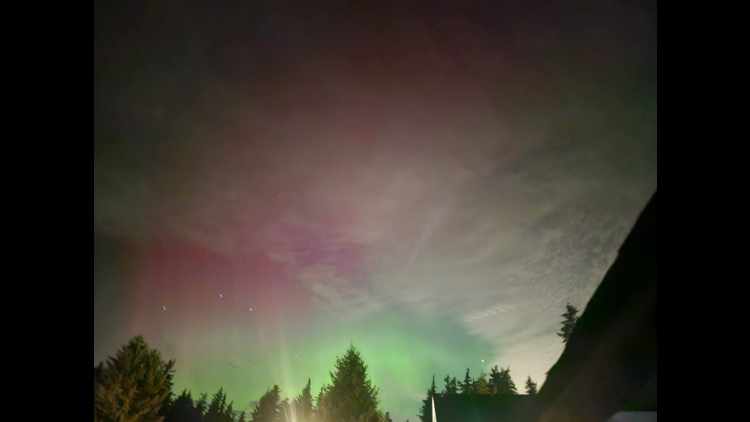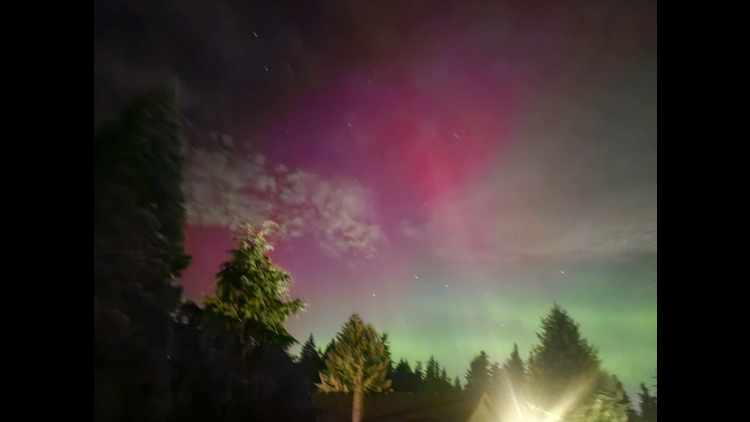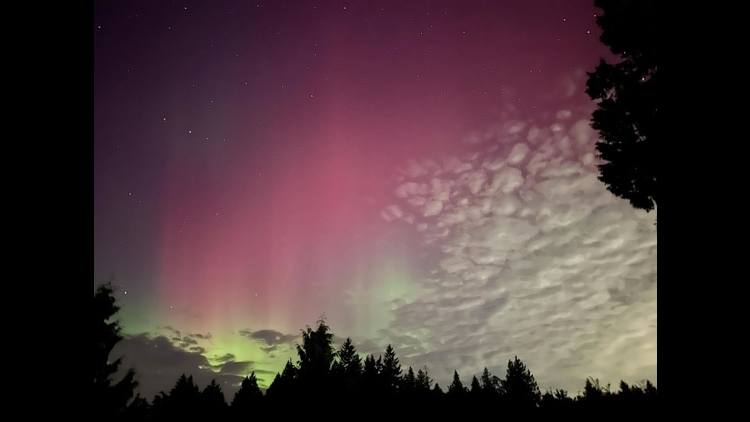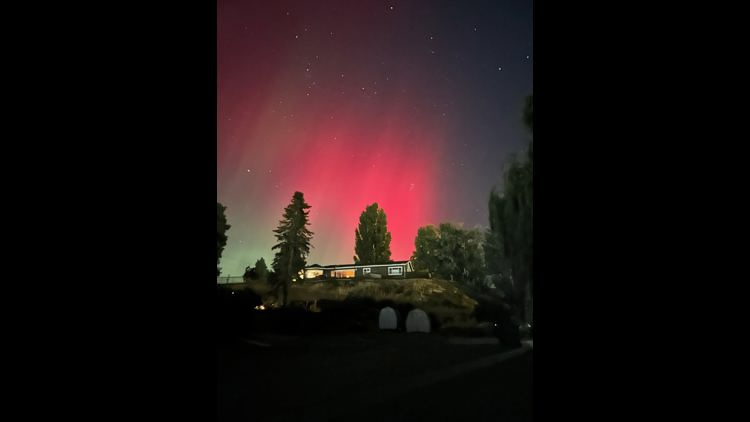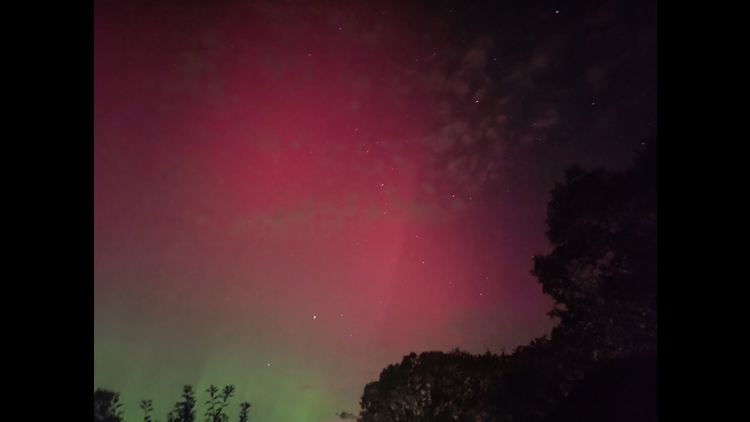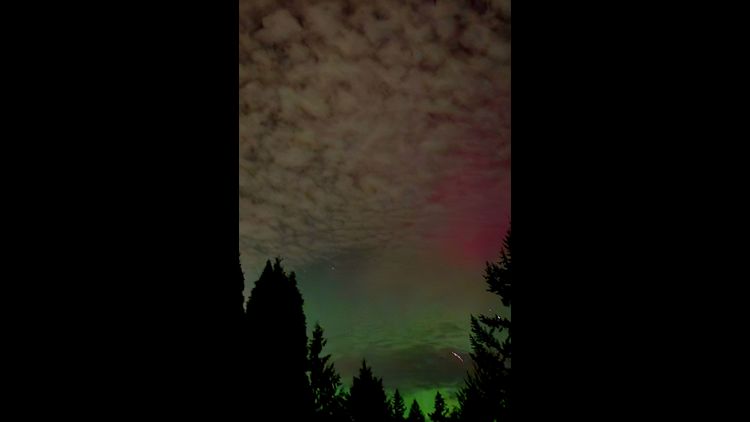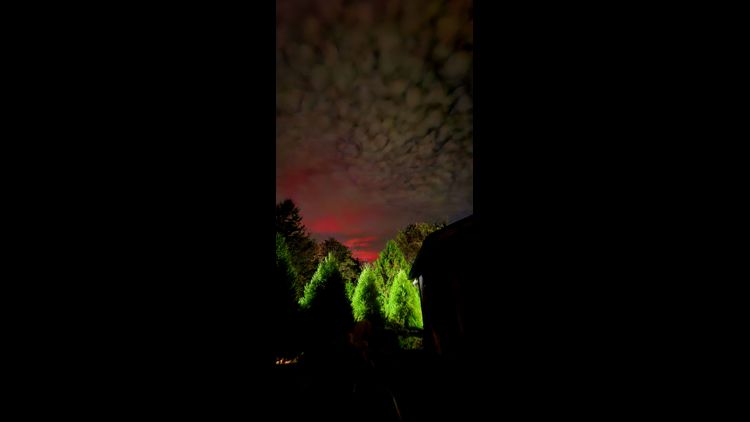SEATTLE — KING 5 viewers caught pictures of the stunning northern lights that shone brightly over portions of Washington state late Monday night.
The aurora borealis was photographed in Yelm, Poulsbo, Wenatchee, Lake Stevens and near Mossyrock.
The Space Weather Prediction Center issued a geomagnetic storm warning just before 9:30 p.m. Monday night that solar debris was expected to collide with the earth's magnetosphere through 2 a.m. Tuesday morning.
This most recent storm registered as a G3 on a scale from a G1, the least impactful, to a G5, the most impactful. A G3 is considered a strong storm with the potential to impact technology that utilizes radio communication.
The type of storm that creates the aurora borealis is called a Coronal Mass Ejection (CME), which occurs when the sun sends solar material into space, carrying a strong localized magnetic field with it.
When a CME collides with Earth's atmosphere, electrically charged particles glow different colors when they shed energy, according to NASA's Jet Propulsion Lab.
Northern Lights shine across Washington state
For those who missed this storm - there will likely be other opportunities to see the northern lights as the sun progresses through its solar cycle.
The solar cycle occurs as the sun's north and south magnetic poles switch places. As the magnetic fields on the sun change, activity increases, according to NASA. The solar maximum takes place around the middle of that cycle.
This solar cycle has been "much more active" than experts had initially predicted, Shawn Dahl with the Space Weather Prediction Center said. Even after the sun reaches the peak of its solar cycle, impacts will extend well into 2025 and 2026, including the potential for powerful aurora borealis-causing coronal mess ejections.




